This post may contain affiliate links, please read my full disclosure policy.
Layered Lotus Biscoff Cake is made with vanilla cake batter mixed with lotus biscoff cookie crumbs. This three layer bakery style cake is frosted with silky biscoff swiss meringue buttercream. It’s the perfect celebration dessert!
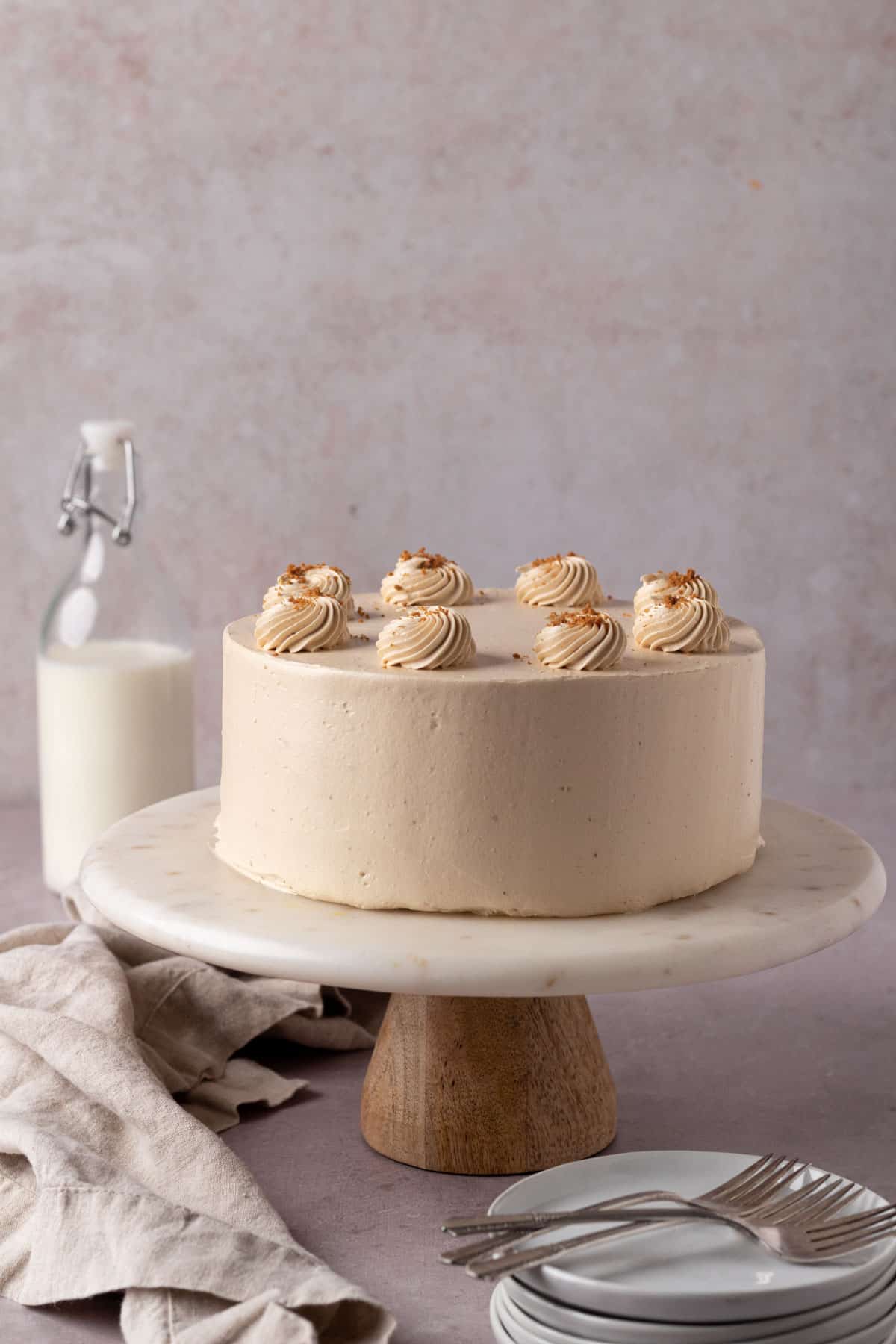
Lotus biscoff cake is the perfect cake for any celebration. It’s a moist and flavorful cake that is easy to make. It begins with a vanilla cake base that’s mixed with biscoff cookie crumbs and bakes into a fluffy cake.
As a trained pastry chef, swiss meringue buttercream is my go-to. It’s not overly sweet, and it has a silky texture. This cake recipe combines biscoff cookie spread with vanilla swiss meringue buttercream for a delicious, creamy frosting.
If you’re craving more biscoff recipes, then try easy and decadent biscoff blondies, chewy cookie butter cookies, and easy lotus biscoff truffles.
Why You'll Love This Recipe
- It’s a tender cake paired with a creamy, silky frosting.
- The cake and buttercream can be made ahead of time.
- You can also make cupcakes using this recipe.
- It's packed with cookie butter flavor for a delicious layer cake.
What is cookie butter?
Cookie butter is a spread made from ground-up European spice cookies that are called speculoos. It has a consistency similar to that of peanut butter. This spread comes in creamy or crunchy texture and makes a delicious addition to baked goods such as cookies, cakes, and blondies. You can find this spread at larger supermarkets under the brand Biscoff, at Trader Joe’s as speculoos cookie butter, or online.
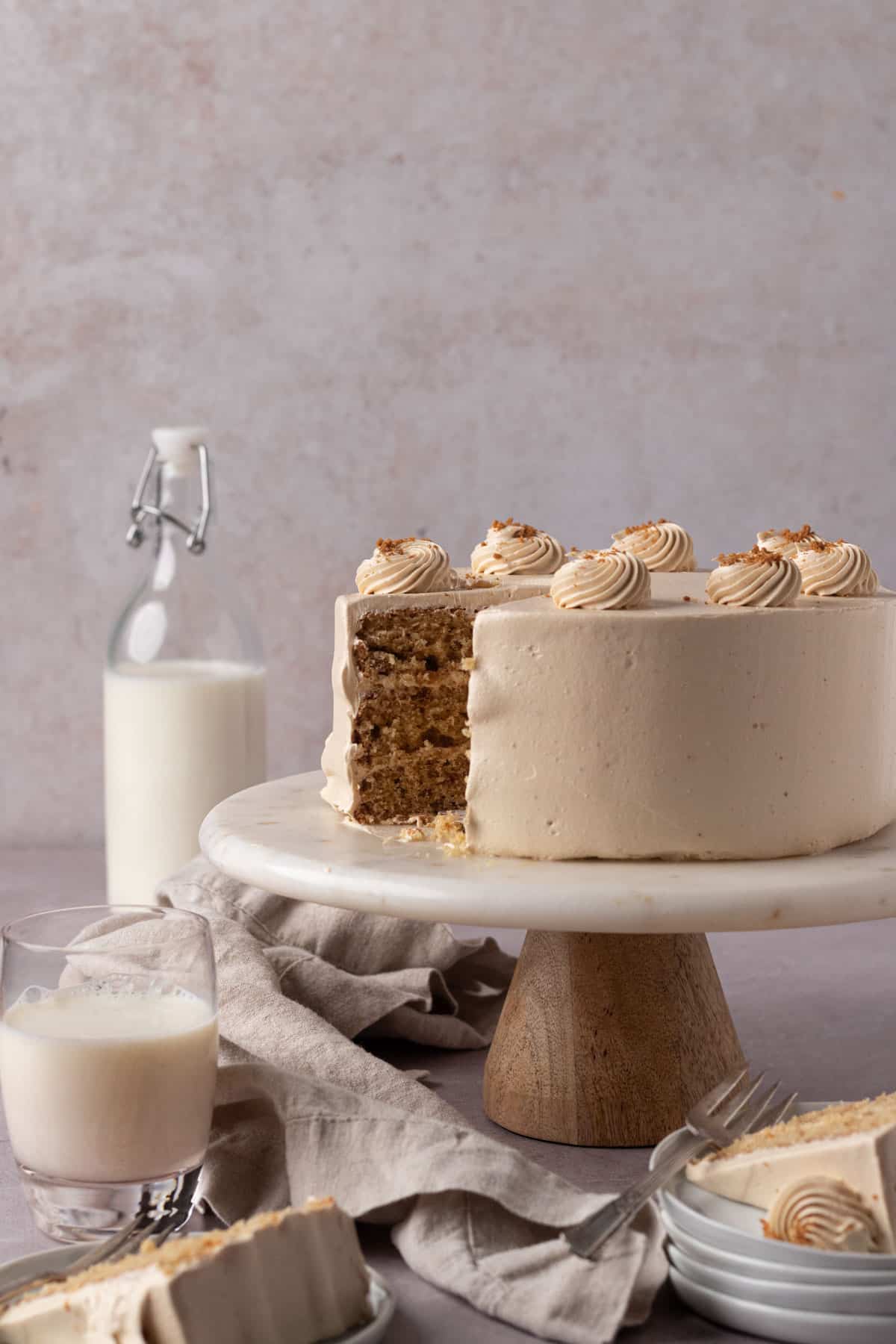
Before you begin
Take out the following baking equipment.
Digital kitchen scale
Three 8-inch round cake pans
Parchment paper
Medium bowl
2 small bowls
Whisk
Stand mixer fitted with the paddle attachment
Silicone spatula
Wire cooling rack
Small saucepan
Stand mixer whisk attachment
Allow all your ingredients to come to room temperature.
Read the recipe from start to finish.
Ingredients Needed
This lotus biscoff cake recipe is made with everyday baking ingredients found in the pantry and refrigerator, with the addition of biscoff cookies and spread (which is a staple in our pantry!). Here’s what you need:
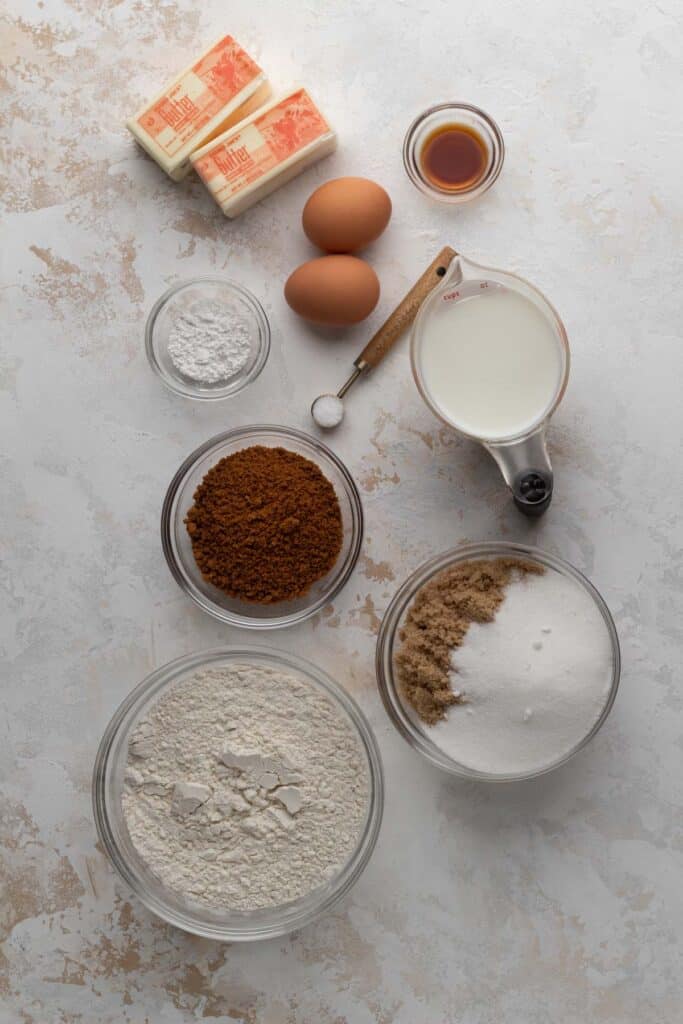
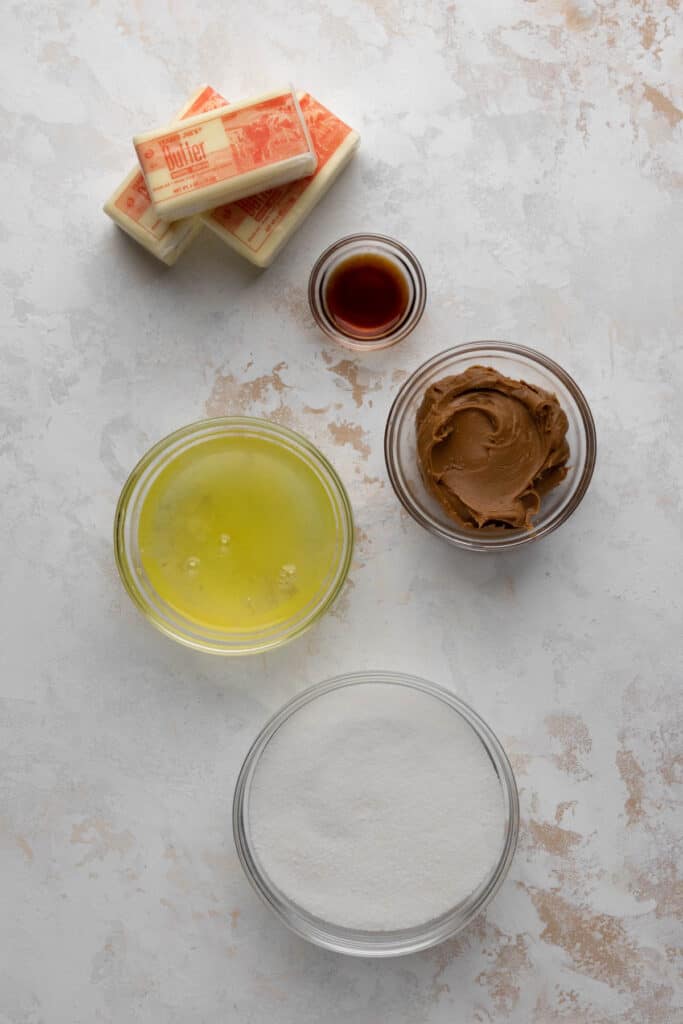
- All-purpose flour: gives the right amount of tenderness to the cake.
- Biscoff cookie crumbs: adds biscoff flavor and a slight texture to the cake layers.
- Baking powder: the leavening agent that causes the cake to rise and have a fluffy texture.
- Salt: enhances the sweetness of the cake.
- Butter: use unsalted butter at room temperature.
- Light brown sugar: adds sweetness to the cake with a slightly caramel-like flavor.
- Granulated sugar: also adds sweetness to the cake.
- Eggs: add moisture, flavor, and richness.
- Vanilla: always use PURE vanilla extract for the best flavor.
- Milk: moistens the batter and adds color and flavor to the baked cake. Use whole milk for the best flavor and texture.
- Egg whites: whipped with sugar to create a meringue for the swiss meringue buttercream.
- Biscoff spread: combined with the buttercream to add extra biscoff flavor!
How to Make Biscoff Cake (step-by-step instructions)
- Prep baking pans. Grease and flour three 8-inch round cake pans and line the bottoms with parchment paper.
- Whisk dry ingredients. Whisk flour, cookie crumbs, baking powder, and salt.
- Cream butter and sugar. Beat the butter with both sugars for 3-4 minutes until light and creamy.
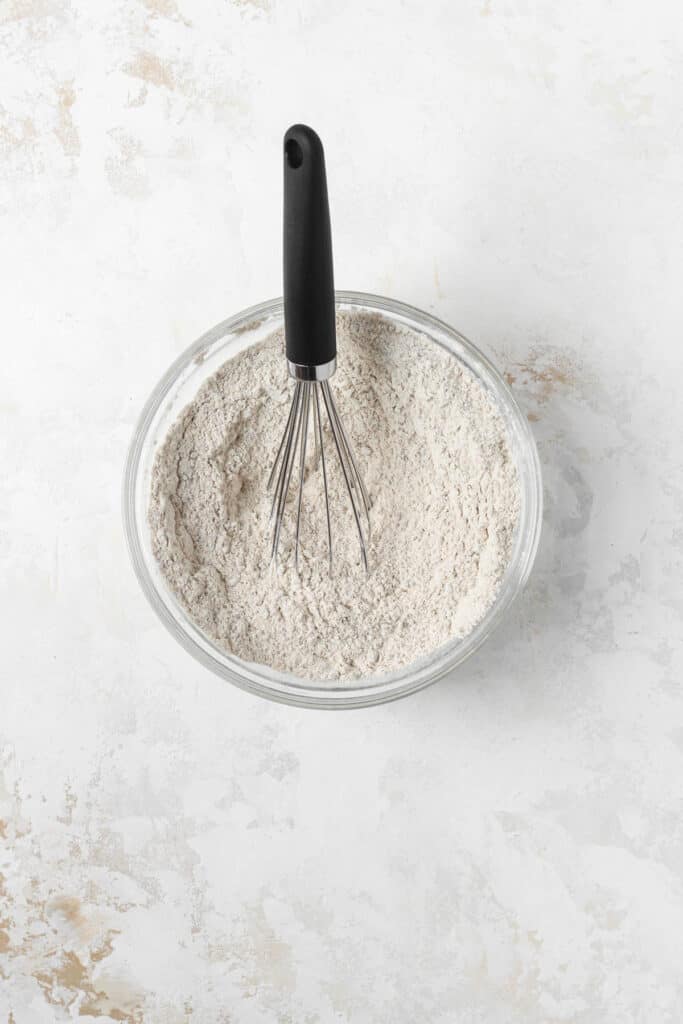
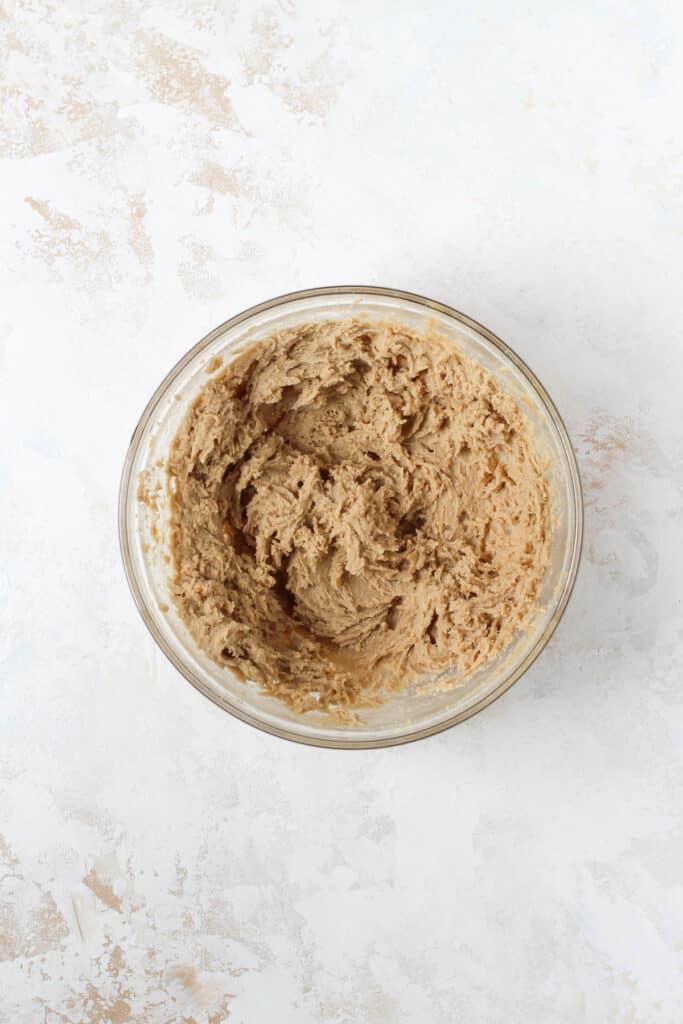
- Add eggs and vanilla. Beat in eggs one at a time until combined. Mix in vanilla.
- Add milk and dry ingredients. In three parts, alternately add the dry ingredients and milk and mix to combine. Evenly divide the batter between the cake pans.
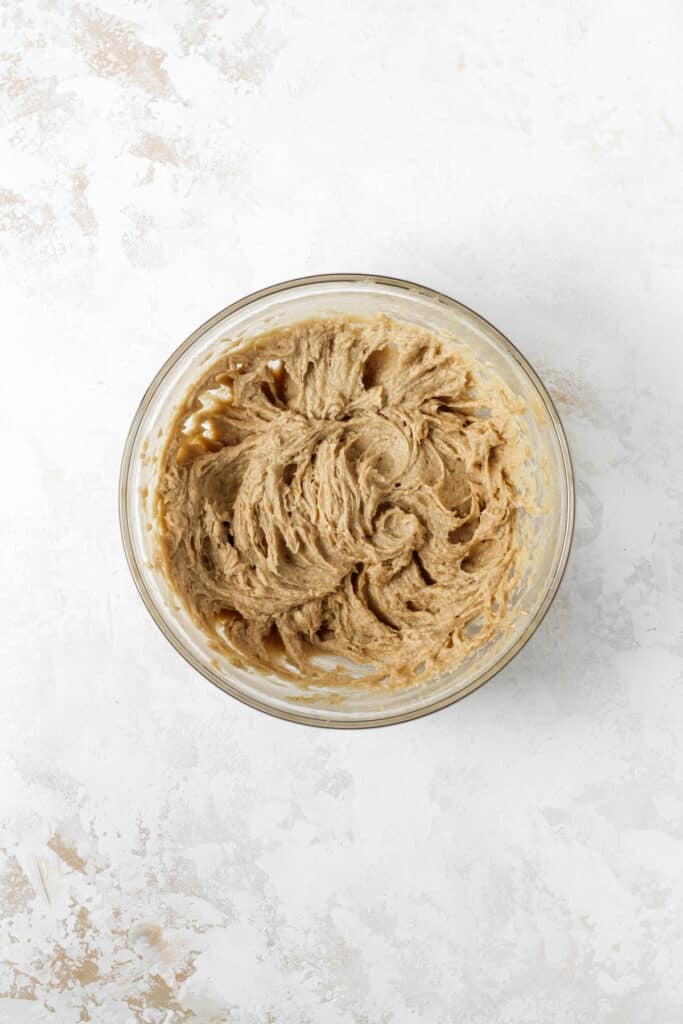
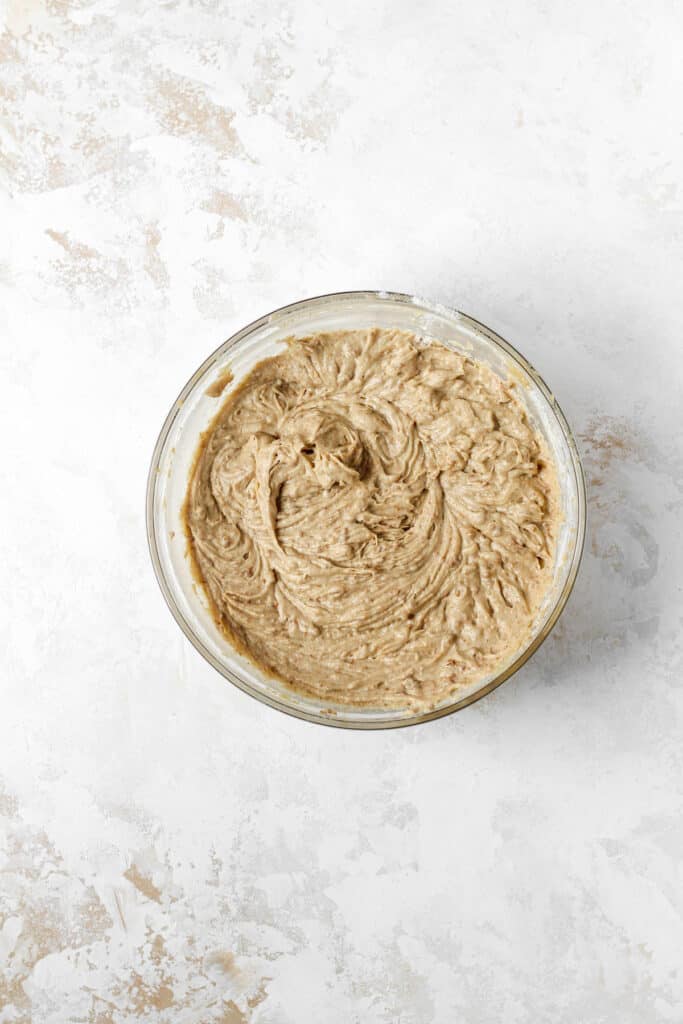
- Bake. Bake for 30-35 minutes in a preheated 350°F/177°C oven.
How to Make Biscoff Swiss Meringue Buttercream (step-by-step instructions)
- Whisk the sugar and egg whites in a stand mixer bowl. Set over a saucepan filled with 1 inch of simmering water.
- Whisk the mixture for 4-5 minutes until the sugar completely dissolves.
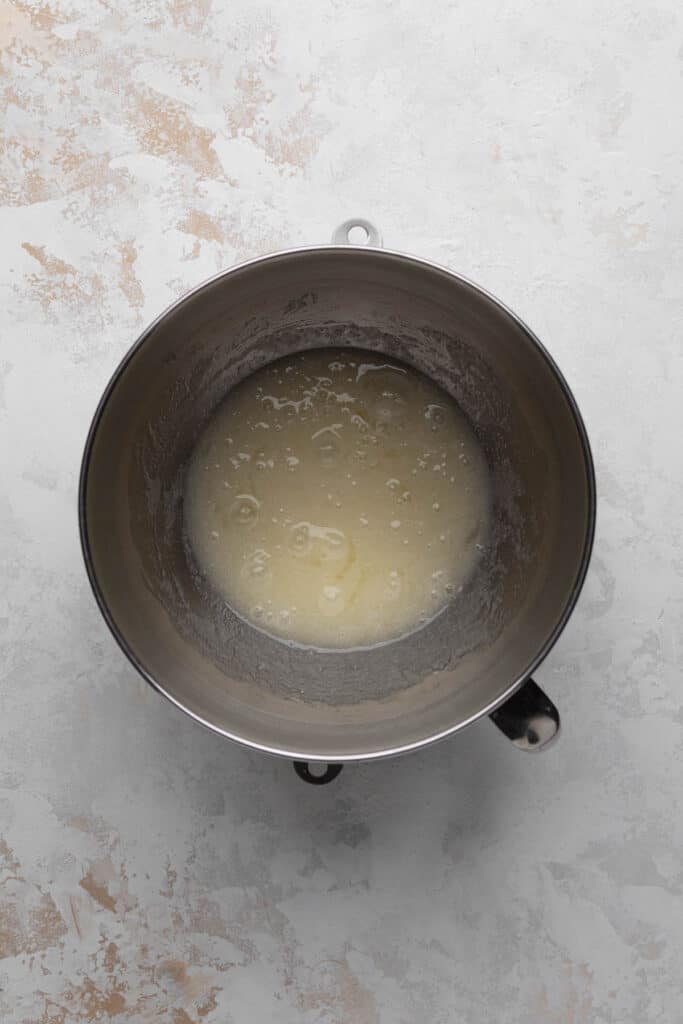
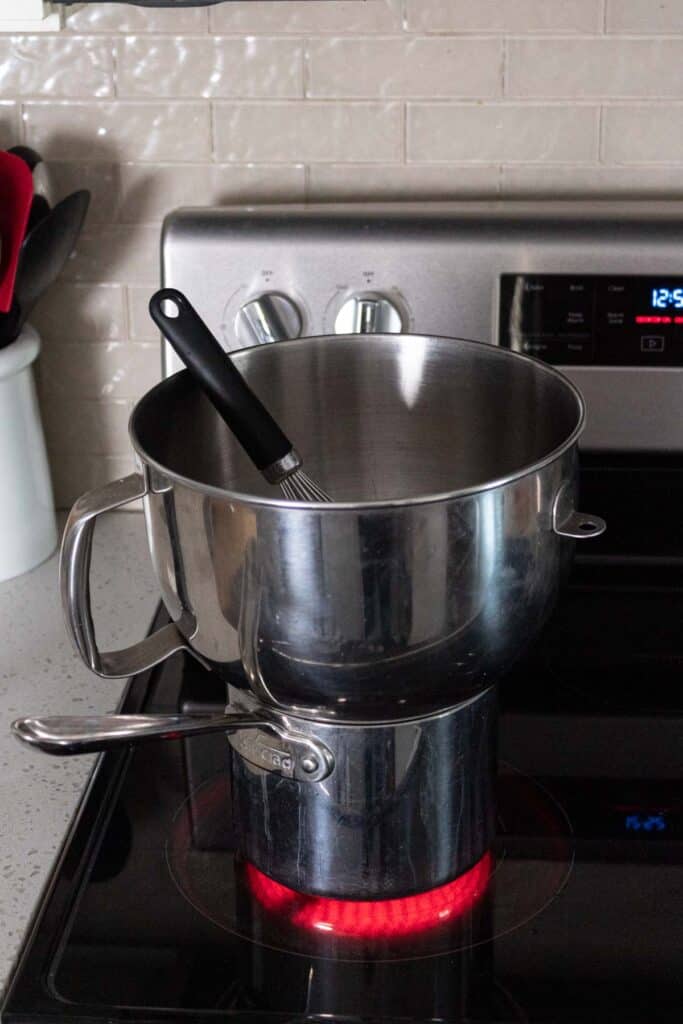
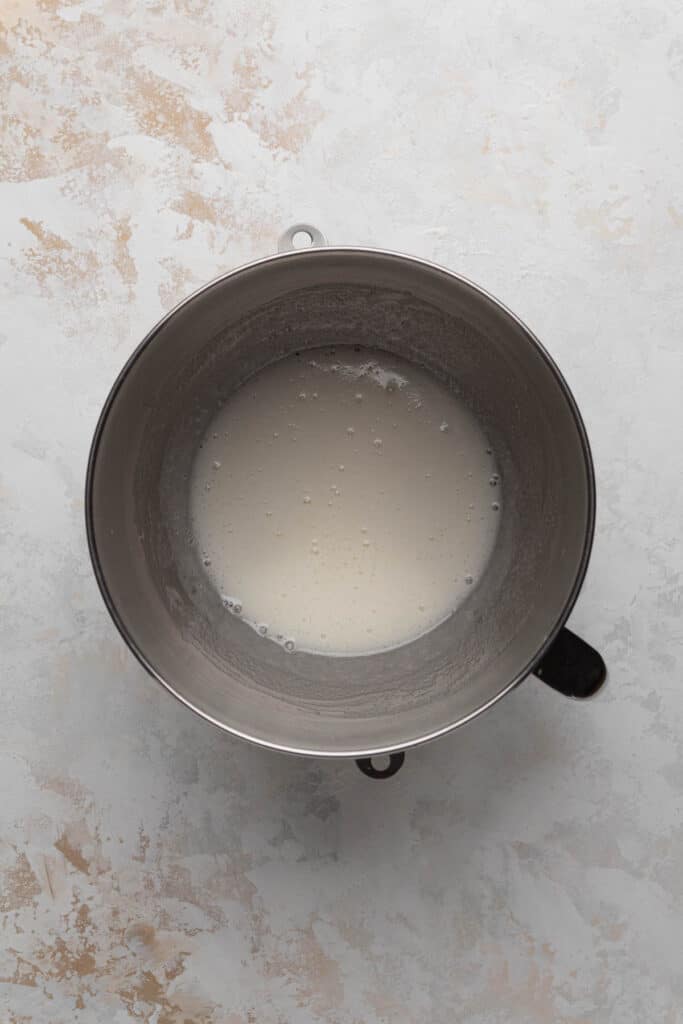
- Using the whisk attachment, whip the egg whites on medium-high until you have a thick meringue and it no longer feels warm to the touch.
- Add the butter, two tablespoons at a time, and continue to whip until the buttercream is thickened and smooth.
- Add the biscoff spread and vanilla and mix until combined.
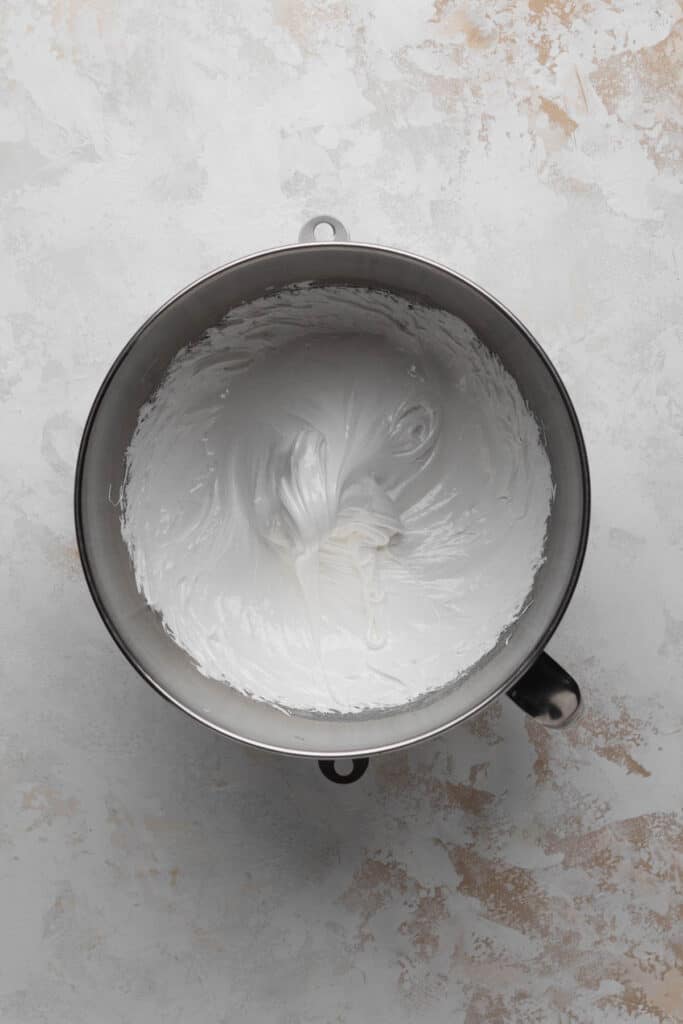
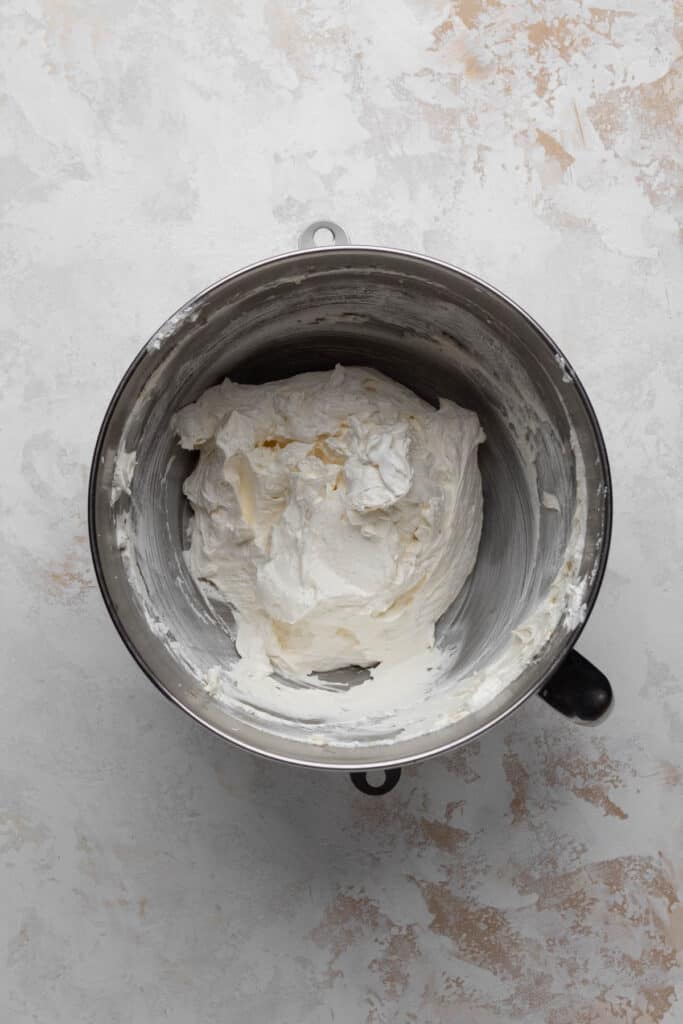
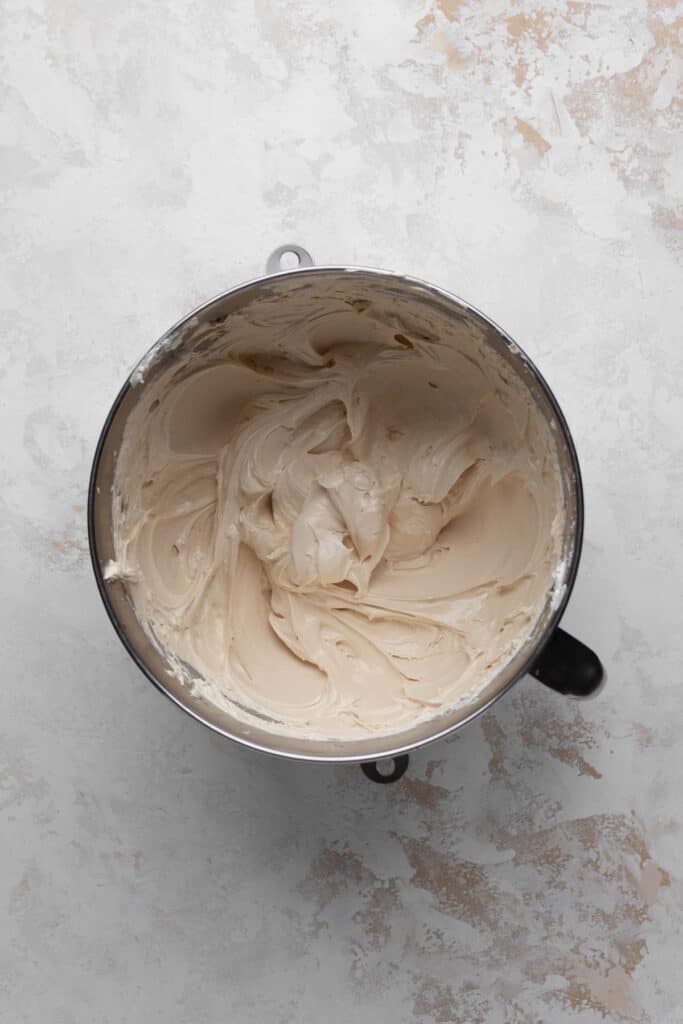
How to Assemble a Biscoff Cake
- Using a large serrated knife, slice a thin layer off each cake to create a leveled surface.
- Place one layer of cake onto a cake turntable, cake stand, or serving dish. Spread 1/4 of the buttercream evenly.
- Top with a second cake layer and spread another 1/4 of the buttercream evenly.
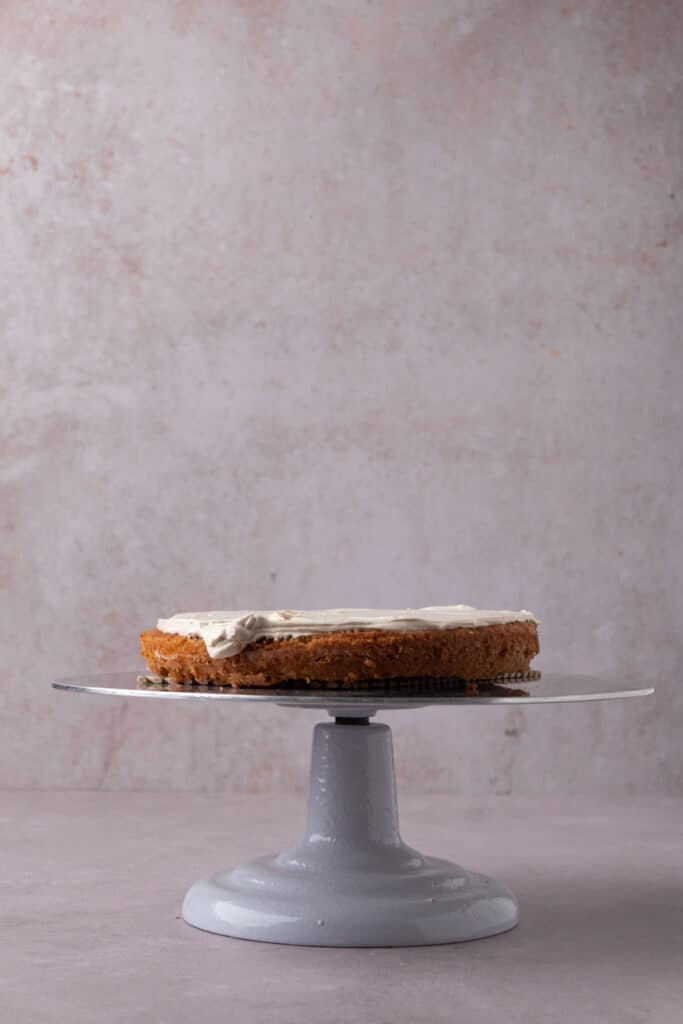
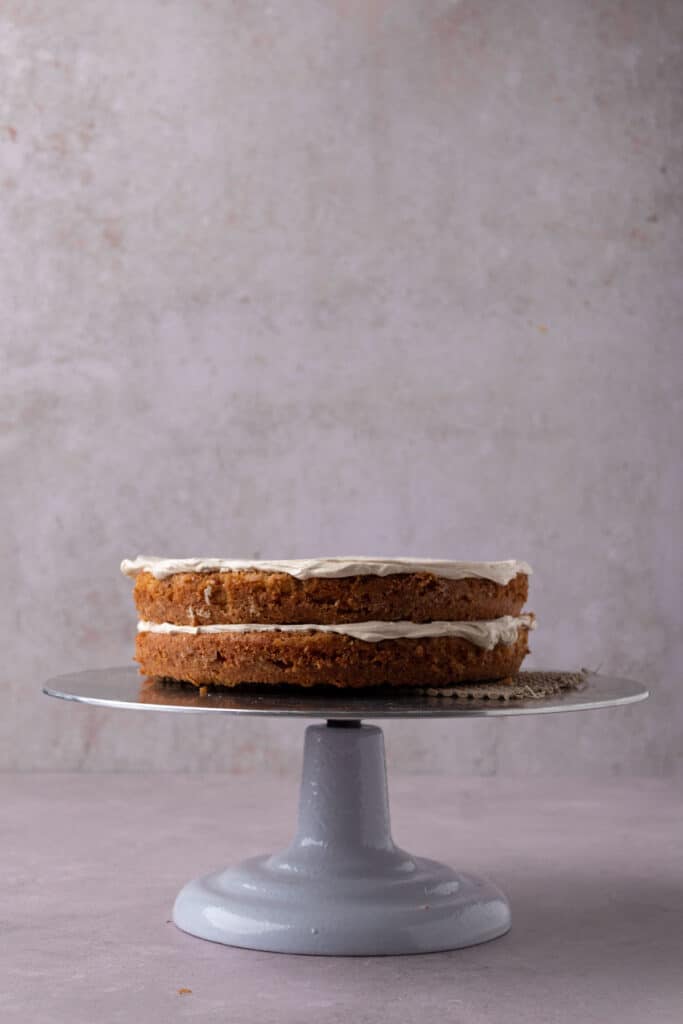
- Top with the final layer and spread a very thin and even layer of buttercream on the top and sides of your cake to create a ‘crumb coat.’
- Place your cake in the freezer for 5 minutes or until the buttercream is firm to the touch.
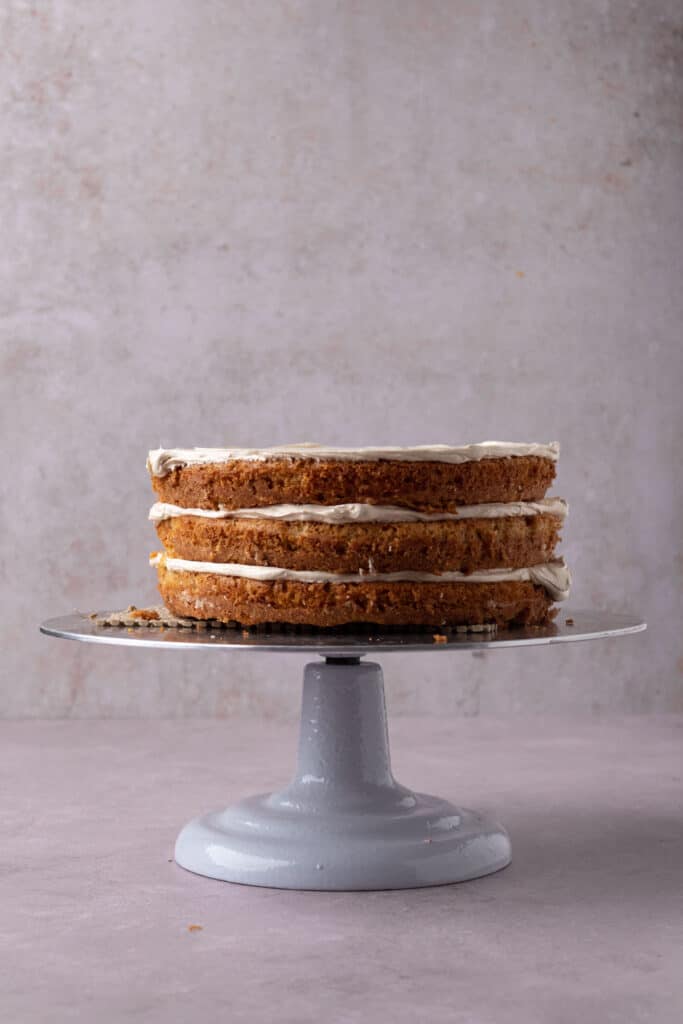
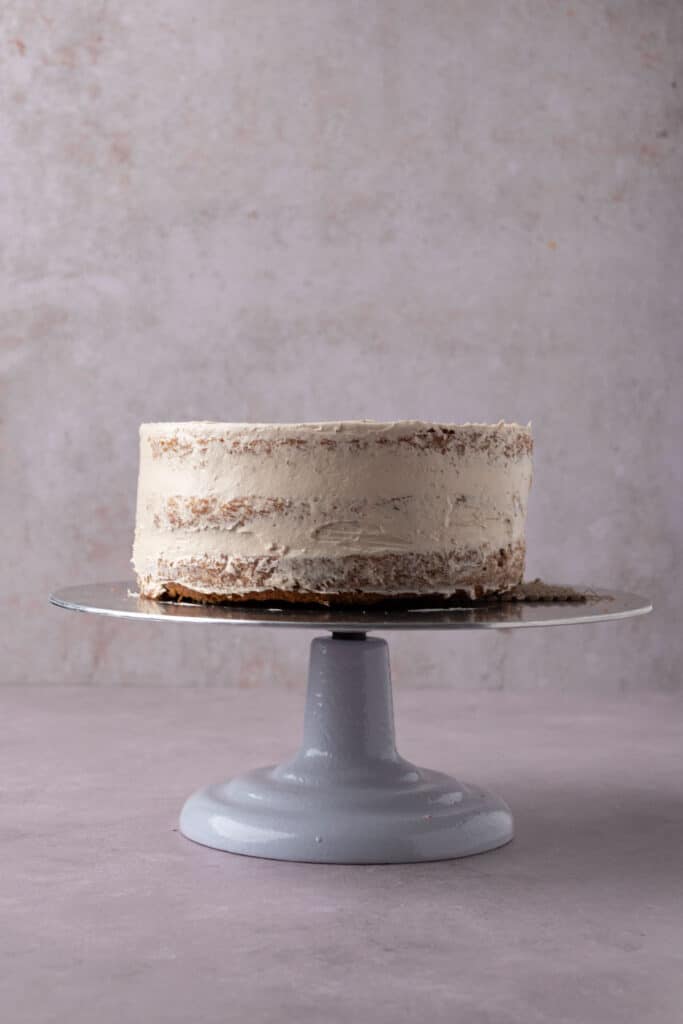
- Use the remaining buttercream to frost the entire cake.
Notes: A crumb coat is a very thin layer of frosting used to seal the crumbs of the cake so they do not mix into your final layer of buttercream. Freezing the cake with the crumb coat is key before adding the final frosting layer.
Substitutions and Variations
- For added texture, layer biscoff cookie crumbs on top of the frosting between each cake layer.
- If you can’t find biscoff cookies, you can substitute them with Trader Joe’s speculoos cookies, graham crackers, or gingersnap cookies.
- Add a layer of ganache to this biscoff cookie cake for a decadent dessert. Use the recipe from my cookie dough cake.
How to Store
Layered cakes are great for making ahead of time. Here’s how you can prep this cookie butter cake and store any leftovers:
- Cake Layers (Make Ahead): Cool cake layers completely, wrap them in plastic wrap, and store them at room temperature overnight. Alternatively, place wrapped layers in a freezer-safe bag and freeze for up to three months. Thaw in the refrigerator overnight and frost.
- Leftover Cake: Cover and store at room temperature for up to 1 day or in the refrigerator for up to 5 days. To freeze, cut the remaining cake into slices and individually wrap them with plastic wrap. Place in an airtight container and store in the freezer for up to 3 months.
Note: For the best texture, do not freeze whole decorated cakes. Instead, freeze the cake layers, thaw them overnight in the refrigerator, and decorate up to 1 day before serving.
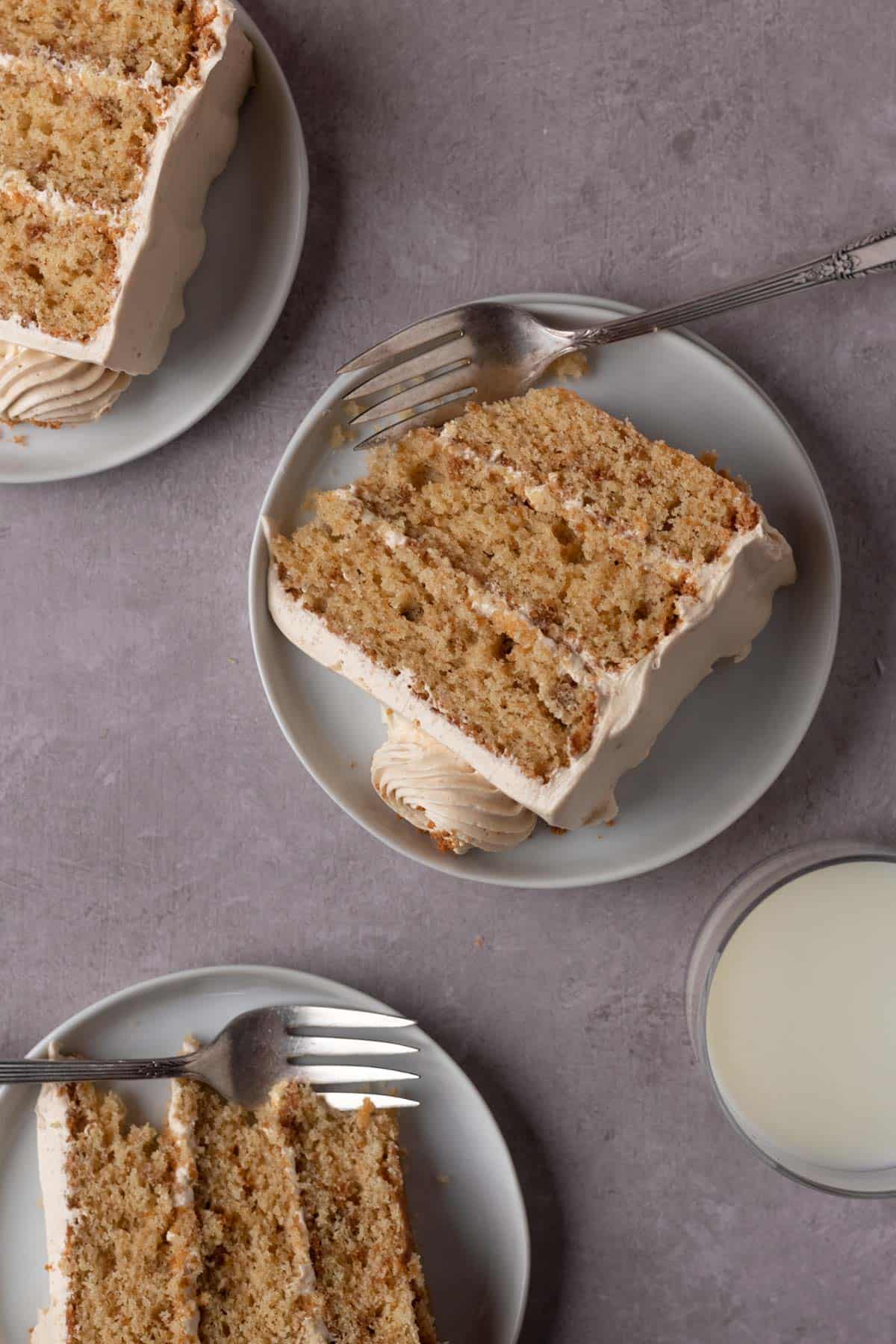
FAQ
I would not recommend this substitution. This lotus biscoff cake recipe uses all-purpose flour for the perfect moist and tender cake
Yes, you can evenly divide the batter into two round 9-inch cake pans. It will take a little longer to bake, so check for doneness around 35 minutes.
Yes! Fill each cupcake liner 2/3 full and bake for 18-20 minutes or until a toothpick inserted into the center of the cupcakes comes out clean.
Once you add the butter to the meringue, if it is slightly runny, don’t worry. Continue to whip the mixture on medium-high speed, and it will come together. Sometimes it will take several minutes.
Baking Success Tips & Takeaways
- Measure by weight for the most accurate and consistent results.
- Scrape the bottom and sides of your mixing bowl after beating the butter and sugar and each egg addition to prevent lumps in your batter.
- Add the dry ingredients to the batter in portions alternating with the milk to produce a tender cake.
- Ensure your meringue is cooled before adding butter to it otherwise, you will have a soupy mess.
More Biscoff Spread Recipes You'll Love
Please leave a starred rating and comment below if you make this Layered Lotus Biscoff Cake. I love reading your feedback! And if you’d like to make this recipe later, don’t forget to pin it on Pinterest! Happy Baking!
Print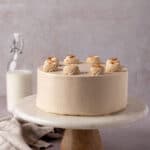
Cookie Butter Cake
- Total Time: 2 hours (includes cooling)
- Yield: 3 layer 8-inch cake 1x
Description
Layered Lotus Biscoff Cake is made with vanilla cake batter mixed with lotus biscoff cookie crumbs. This three layer bakery style cake is frosted with silky biscoff swiss meringue buttercream. It’s the perfect celebration dessert!
Ingredients
For the cake
- 280 g (2 cups) all-purpose flour
- 70 g (1/2 cup) biscoff cookie crumbs
- 2 1/4 teaspoon baking powder
- 1/2 teaspoon salt
- 226 g (1 cup) unsalted butter, at room temperature
- 220 g (1 cup) light brown sugar
- 110 g (1/2 cup) granulated sugar
- 2 large eggs, at room temperature
- 1 1/2 teaspoons pure vanilla extract
- 240 g (1 cup) whole milk, at room temperature
For the swiss meringue buttercream
- 5 large egg whites
- 330 g (1 1/2 cups) granulated sugar
- 339 g (1 1/2 cups) unsalted butter, at room temperature
- 140 g (1/2 cup) smooth cookie butter
- 2 teaspoons pure vanilla extract
Instructions
For the cake
- Preheat oven to 350°F/177°C. Grease and flour three 8-inch round cake pans. Line the bottoms with parchment paper and set aside.
- In a medium bowl, whisk together the flour, cookie crumbs, baking powder, and salt. Set aside.
- In a large bowl, using a hand-held mixer or stand mixer fitted with the paddle attachment, beat together the softened butter and both sugars on medium speed until smooth and creamy, about 3-4 minutes. Scrape down the sides of the bowl as needed.
- Beat in the eggs, one at a time, until combined. Scrape down the sides of the bowl and beat in the vanilla until mixed well.
- With the mixer on low speed and in three parts, alternately add the dry ingredients and the milk to the batter, beginning and ending with the dry ingredients. Beat until just combined.
- Evenly divide the batter between the prepared cake pans.
- Bake for 30-35 minutes, or until a toothpick inserted in the center comes out clean.
- Allow the cakes to cool completely in the pans set on a wire rack before frosting.
For the swiss meringue buttercream
- Put the sugar and egg whites in a mixer bowl and whisk together. Make a double boiler by placing the bowl over a saucepan of simmering water (ensuring the bowl does not touch the water). Whisk the mixture constantly until the sugar is completely dissolved and the mixture feels hot to the touch, about 4-5 minutes. You should not feel any sugar granules when rubbing the mixture between your fingertips.
- Transfer the bowl to the stand mixer fitted with the whisk attachment. Whip the mixture on medium-high until it no longer feels warm and the meringue is thick and glossy.
- With the mixer on medium, add the softened butter two tablespoons at a time. Continue to whip until the mixture is smooth. Mix in the biscoff spread and vanilla until completely incorporated.
Notes
Make-ahead: Cool cake layers completely, wrap them in plastic wrap, and store at room temperature overnight. Swiss meringue buttercream can be made up to 1 week in advance and stored covered in an airtight container in the refrigerator. When ready to use, bring the frosting to room temperature and re-whip for 5 minutes.
Freezing: Store wrapped cake layers in a freezer-safe bag and freeze for up to three months. Thaw in the refrigerator overnight and frost.
Cupcakes: To make cupcakes, fill each cavity of a cupcake pan lined with cupcake liners 2/3 full. Reduce baking time and begin checking at the 15 minutes mark.
- Prep Time: 35 minutes
- Cook Time: 35 minutes
- Category: Cakes

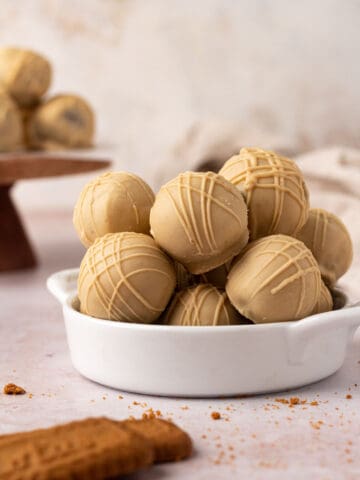
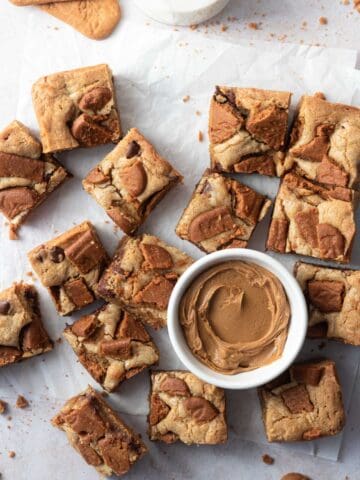
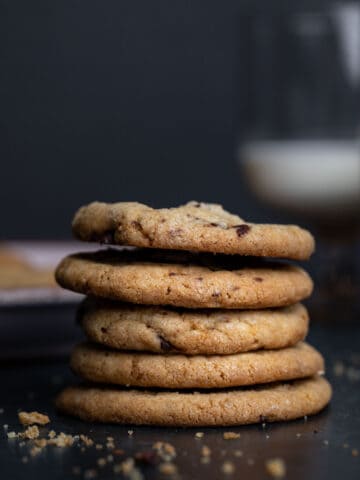
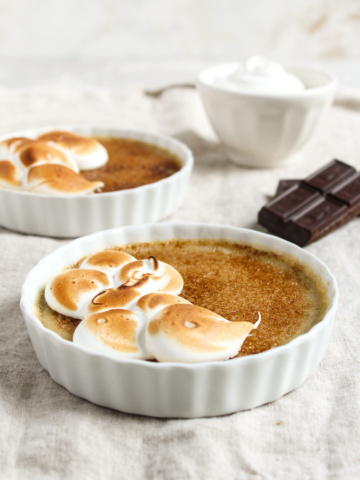
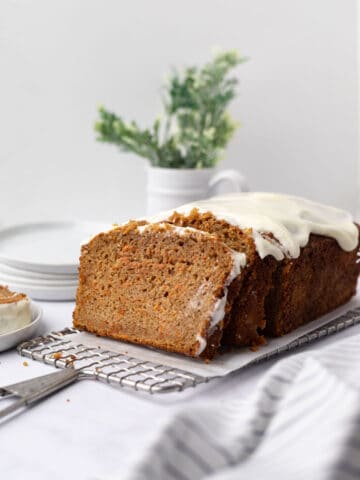
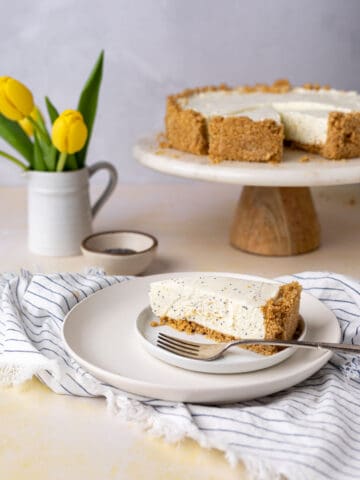
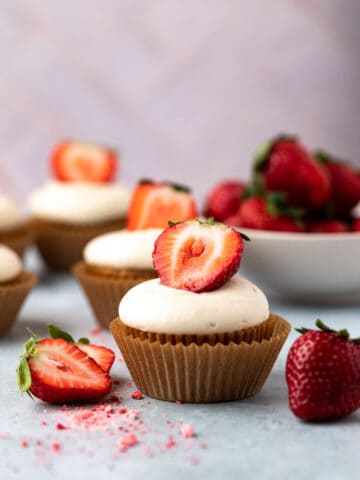

Carrie
The instructions were really clear and this was super easy to make! The meringue takes a long time to whip up into the thickness in the photo, but well worth the time. We used Graham cracker crumbs and smooth cookie butter, did two 8-inch cake layers and used Biscoff butter to pipe “happy birthday” on the cake. Thanks for an awesome recipe!
Maria Pagiotas
Hi Carrie! I'm so happy you enjoyed this recipe! What a great idea to use the Biscoff to pipe happy birthday!